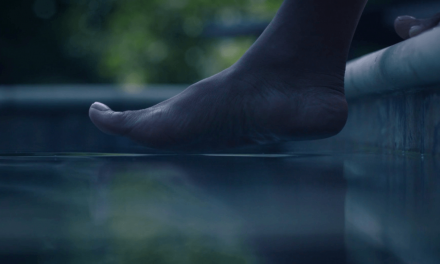Long before the end of Christmas television viewing and schedules, broadcasters and production companies herald their new season of television viewing. It is part of that tradition where we say goodbye to the old year, and welcome in the new, and it is yet another example of how television has ingratiated itself into the rhythms of everyday life and the cultural rituals of a nation. However, I will be looking backwards, at Sherlock and The Abominable Bride (January 1st 2016), to consider it in terms of ‘storyworlds, transfiction, and history on television. It would seem, with the relative popularity of the BBC’s Dickensian, that Victorian culture and fiction is a banker in television terms. But what both The Abominable Bride and Dickensian have in common also is the concept of extended storyworlds. They are, to use a contemporary term, ‘mash-ups’, and whether through transmedial or transfictional approaches, the migration of storyworld characters across different texts and through various adaptations seems acceptable to many viewers. Both Sherlock and Dickensian show that if television invests in anything it is storyworlds that can be extended either through prequels, sequels, or in the case of Dickensian, and Sherlock transfiction. Is this a cultural exercise/influence, or is it, as Constantine Verevis with reference to Umberto Eco suggests, a commercially minded decision to “recycle the characters of a previously successful story in order to exploit them…”? (Verevis 2010; 11).
Where The BBC’s Sherlock Christmas special is concerned the problem that presents itself is just what to focus on, and my heading, Storyworlds, Transfiction, and TV Histories, partly alludes to this. Gatiss and Moffat’s novel concept to transpose their modern-day adaptation backwards to its original time and setting was always going to be an exercise in popular culture ‘knowing-ness’ and a direct address to fan audiences and critics alike. Similarly, in paratextual terms, the hype surrounding The Abominable Bride ensured a transmedial (cinema showings), transnational, and transfictional exercise and experience. In fact, such has been the success of Gatiss and Moffat’s modern adaptation, and so global and modern in dimension the phenomenon, that whilst the return to the Victorian setting of the ‘proto’ storyworld was understood as a homecoming of sorts, the actual treatment of the special one-off – its transfictionality – also ensured we understood it as out of its time. This was largely due to its focus on identity politics. This is paradoxical in one sense, but it also serves to show how a global and transnational mind-set have informed not only the new adaptation that is Sherlock, but the viewing experience too. Therefore, in terms of understanding ca The Abominable Bride, and Sherlock for that matter, it is perhaps best to approach them through ideas of the storyworld (or what Matt Hills, in relation to Doctor Who, calls the “narrative universe”. 2015; 360), not only because it holds together transmedial and transfictional adaptations, but because it is the subversion/transgression of the storyworld – through an historical intervention – that Sherlock’s The Abominable Bride has met with some criticism.
Criticism aside (for the moment), the success of the modern-day adaptation lies in the transnational and transfictional reinscription of the storyworld, and ca The Abominable Bride can be seen as an example of transfictionality that as Marie-Laure Ryan observes, involves three fundamental operations – “expansion, modification, and transposition” (2013; 361). In their quest to create a Sherlock Holmes for the 21st century, Gatiss and Moffat have arguably expanded, modified, and transposed Conan-Doyle’s storyworld into a creation that assimilates and behaves like most other cultural artefacts of the 21st century. There is the playful self-reflexivity, reinscription, the transcending of cultural and generic boundaries, and a play with time or the temporal, all of which were evident in The Abominable Bride. Gatiss and Moffat have created, through Sherlock, what Henry Jenkins (via Sam Ford) has described in contemporary media terms as an ‘Immersive Storyworld’ – “ a space particularly rich for interaction between a text and a vibrant fan community” (2007) – and further described by ideas of seriality. Although Jenkins’ concept of storyworlds are often in relation to transmedial approaches, where the development of the storyworld is observed through its progression through each new medium (2011), I want to consider Sherlock’s The Abominable Bride in terms of transfiction. As Ryan observes, transfictionality describes “the migration of fictional entities across different texts” (2013), and where both Sherlock and The Abominable Bride is concerned, the migration across texts has been reified further by a migration across time.
But with this migration across time comes the inevitable confrontation with history. Much has been written, especially on social media, regarding the anachronisms (or to some, the liberties) present in ca The Abominable Bride, yet the historical setting has also allowed the storyworld(s) of Sherlock Holmes and Sherlock to visibly make clear a connection (and continuity?) between the original text and the new adaptation. By opening with John Watson’s service record and exploits in “The second Afghan War”, the Sherlock Christmas special attempts to make more explicit how the storyworld links with modern anxieties and contemporary issues present in the contemporary adaptation – that the storyworld itself is timeless.
Further, this link or comparison between old and topical is exploited directly through the conventions, or our knowledge of the storyworld, and its manipulation through transfictional approaches. As I have mentioned previously (CST Blog December 2015), in Sherlock and in the Christmas specials in particular (The Empty Hearse 2014), themes of terrorism, a hidden power, or threats to security are prevalent. However, in ca The Abominable Bride these themes are subverted or become (quite literally) a trick with veils, causing mixed reactions. Suggestions of a hidden war throughout The Abominable Bride play on contemporary concerns about terrorism and recurring themes in the modern adaptation. The introduction of John Watson’s wife, dressed a la Burqa-esque, not to mention the wedding veil of the ‘abominable bride’, also allude to both contemporary western Orientalism and suspicions of the ‘other’ (Islamic culture/terrorism), but also to a time in western culture when women were similarly veiled – albeit for different, though no less chauvinistic reasons. The historical setting therefore, along with the dynamics of the Christmas special itself, has allowed the storyworld to “speak to issues…that might normally be out of bounds” (Longden; 2015), but it also clumsily places the women’s suffrage movement in the same territory or mind-set as terrorism. This was a deliberate move by the writers and one that played upon recurring themes in the storyworld.
Although much of the criticism on social media surrounding this historical intrusion into the storyworld focussed on the conceit of Sherlock Holmes ‘explaining’ the women’s suffrage movement (“it is a war we must lose”), much more was expressed regarding its anachronism. In fact, the criticism has been similar to that often expressed in relation to historical fiction. However, both the inclusion of the women’s suffrage movement in The Abominable Bride, and this criticism can be understood in terms of contemporary popular culture and in terms of the process of adaptation. For De Groot the discourse of history in popular culture shows how it is often consumed and related in “different and dissident ways and by a variety of social groups” (2006; 391). For Linda Hutcheon, the processes of adaptation do not exist in a vacuum; “they all have a context – a time and a place, a society and a culture” that inspire “corresponding modifications” in the political or cultural meanings of particular stories (xvi). In The Abominable Bride, different and dissident ways of dealing with history have their basis in contemporary identity politics, and identity politics that not only have a history, but which revolve around issues of authenticity.
One of the functions that popular storyworlds have served through their adaptation, reinscription, and through transfictional modifications, has been to create discourses on, and raise awareness of topical issues, hopes, and anxieties through the logic of the storyworld and its characters. In some respects it lends these issues a certain identity (even credibility). But the criticism concerning anachronism, and dissident ways with history in The Abominable Bride might reveal something about both storyworlds and historical fiction in general, or at least our expectations of both. Is the criticism aimed at historical inaccuracy, or inaccuracy/transgression in the storyworld, or both? To this i would like to suggest that the real history on show in The Abominable Bride was a history of popular fiction, of storyworlds, and of popular culture itself.
Kenneth Longden has lectured as part of the academic staff at Liverpool John Moores University in Media, Critical, and Creative Arts, and studied for a MPhil/PhD in Transnational Narratives at The University of Winchester. He is a Fellow HEA, and a Peer-Reviewer for various academic journals. He has been published by Intellect Books and Palgrave MacMillan, and writes on Popular Narrative, Film, Television, Fandom, and Popular Culture.





